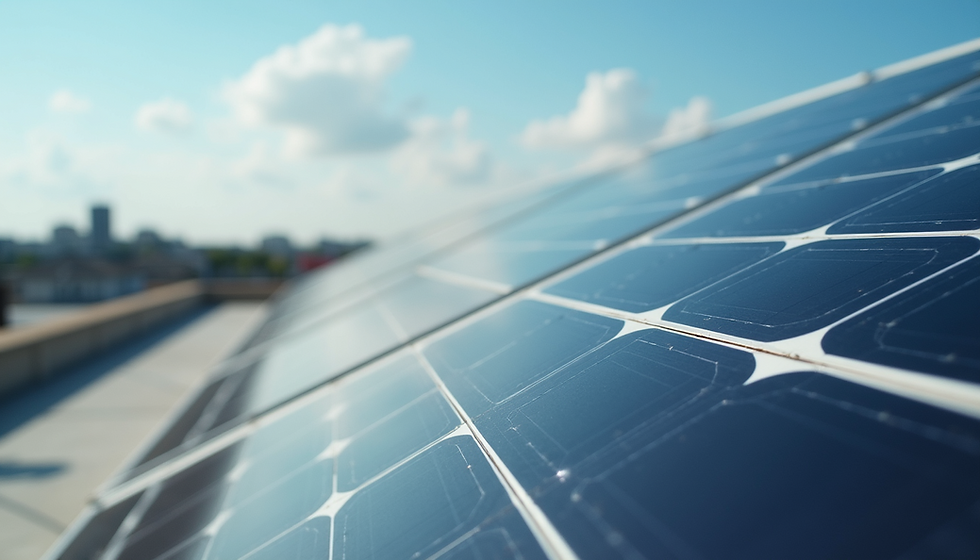Hydropower in the Modern Age – Micro-Hydro and Low-Impact Systems
- Sankalp Agrawal

- May 10
- 3 min read
As the energy transition unfolds globally, hydropower continues to be one of the most reliable and time-tested sources of renewable energy. However, the conventional model of large-scale dams often comes with environmental and social drawbacks, such as displacement of communities and disruption of ecosystems. In response, modern advancements in micro-hydro and low-impact hydropower systems are reshaping how we harness water for energy—offering more sustainable, decentralized, and environmentally friendly alternatives.

Rethinking Traditional Hydropower
Traditional hydropower plants rely on massive reservoirs and dams to generate electricity. While these systems can produce significant amounts of energy, they often come at a cost: disrupting river ecosystems, affecting fish migration, altering sediment flows, and displacing local populations. These issues have led to increasing opposition to large dam projects around the world and spurred interest in smaller-scale solutions.
Micro-hydro systems provide an innovative response to these challenges. They generate electricity using the natural flow of water, often in small streams or rivers, without the need for large reservoirs. These systems typically produce less than 100 kilowatts of power and are ideal for rural and off-grid communities. Importantly, they require minimal environmental alteration and can operate with little to no ecological disruption.
The Mechanics of Micro-Hydro Systems
Micro-hydro systems work by diverting a portion of a river’s flow through a pipeline (penstock) to a turbine, which spins a generator to produce electricity. After powering the turbine, the water is returned to the river with minimal impact. These systems are highly efficient—some achieving over 90% conversion efficiency—and can operate 24/7, unlike solar and wind, which are weather-dependent.
What makes micro-hydro especially promising is its scalability and affordability. For communities in mountainous or hilly terrain with access to consistent water flow, micro-hydro can provide a stable source of clean electricity, improving quality of life and enabling economic development.
Emerging Low-Impact Innovations
Beyond micro-hydro, other low-impact systems are gaining traction. Run-of-river projects, for example, divert a portion of the river flow without storing large volumes of water. These installations maintain natural river pathways and avoid the environmental issues associated with dams. Innovations like Archimedes screw turbines, vortex systems, and gravitational water vortex turbines are also enhancing low-head hydro capabilities, making it possible to generate power from very low elevations.
Some startups and researchers are even exploring modular and portable hydropower kits that can be deployed quickly and affordably in emergency settings or remote areas. These advancements are making hydropower more accessible and reducing the barriers to entry for communities and small businesses around the world.

Environmental and Social Benefits
Low-impact hydropower systems have a much smaller carbon footprint than traditional fossil fuels and avoid many of the environmental concerns linked to large-scale hydro. They also promote energy democratization—allowing local communities to own, operate, and benefit directly from their energy infrastructure.
Furthermore, decentralized hydropower can enhance energy resilience, especially in disaster-prone or geographically isolated areas. Unlike centralized grids, local systems are less vulnerable to widespread outages and can continue to operate independently.
Policy and Global Outlook
Government support and favorable regulations play a critical role in expanding access to micro and low-impact hydro systems. Many countries have introduced feed-in tariffs, grants, and low-interest loans to encourage small hydropower adoption. Organizations such as the International Hydropower Association (IHA) and the Global Hydro Energy Association are also working to set standards and promote responsible hydro practices.
Globally, countries like Nepal, Kenya, and Peru have demonstrated the transformative power of micro-hydro in rural electrification and sustainable development. These case studies offer a model for how small-scale hydro can contribute meaningfully to national energy goals.
Charting a New Course for Hydropower
Hydropower's future doesn't rest solely on mega-dams. Micro and low-impact systems represent a growing frontier in renewable energy—one that aligns sustainability with innovation, and environmental stewardship with energy equity. As these technologies become more refined and accessible, hydropower is poised to reclaim its role as a vital component of a diversified and sustainable energy mix.






Comments